Minami-Awaji, An Island City Rich in Culinary Delights, Traditional Crafts, and Theater
Awaji Island in Hyogo Prefecture is renowned for its clay tiles, puppet theater, and distinctive products such as onions, beef, and rice.
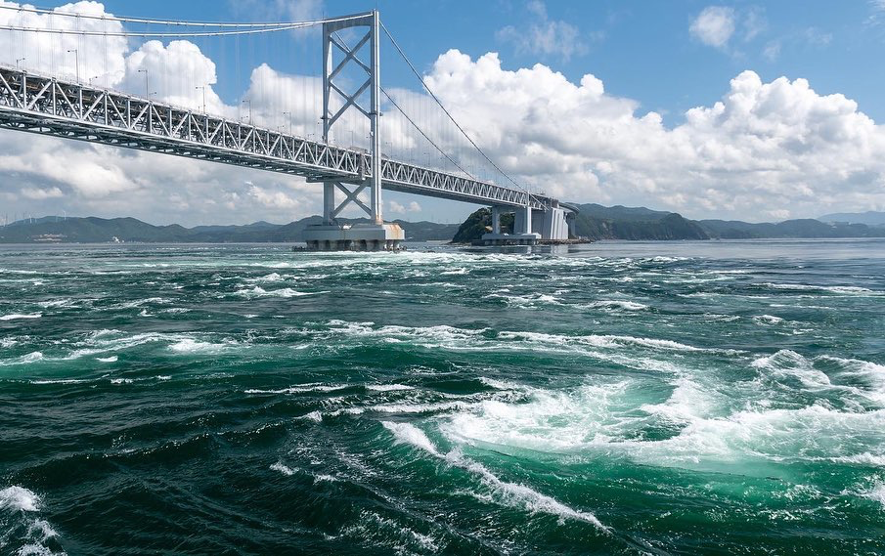
Hyogo Prefecture, adjacent to the popular tourist destinations of Osaka and Kyoto Prefectures, is renowned not only for gourmet delights like Kobe beef but also for its abundance of tourist cities, including the UNESCO World Heritage Site Himeji Castle and the exotic port city of Kobe. Furthermore, Hyogo boasts famous historical hot spring resorts such as Arima Onsen and Kinosaki Onsen.
Facing the Japan Sea to the north and the Seto Inland Sea to the south, Hyogo offers opportunities for beach activities and marine sports along its coastlines. Additionally, inland areas provide winter sports enthusiasts with skiing opportunities during the winter months.
The Charm of Minami-Awaji
Located at the southern tip of Hyogo Prefecture, Minami-Awaji City on Awaji Island boasts a warm climate, fertile land, and abundant fishing grounds, creating an ideal environment.
As the kitchen of Kyoto, Osaka, and Kobe—the Keihanshin region, the city thrives with agriculture, livestock farming, and fisheries. Furthermore, it is home to a variety of specialty products unique to the region, such as onions, Awaji beef, and Awaji rice. Additionally, Awaji tiles, made from clay found on the island, have been a renowned industry since ancient times, earning them a place among Japan’s top three traditional tiles.
Besides its unique agricultural products and Awaji tiles, Minami-Awaji is also rich in traditional culture, exemplified by Awaji puppet theater (Awaji Ningyo Joruri), and natural phenomena like the Naruto whirlpools, which are considered extremely rare worldwide. With so many exclusive attractions to offer, Minami-Awaji invites visitors to take a step beyond Kyoto, Osaka, and Kobe, and explore its distinct charm. Why not plan a visit and discover what makes this city truly special?
Naruto, The World’s Largest Whirlpools
The Naruto Whirlpool Cruise offers a tour to witness the natural phenomenon known as the ‘Naruto Whirlpools’ up close. Created by the drastic tidal currents resulting from the tidal differences between the Pacific Ocean and the Seto Inland Sea, the world’s largest whirlpools form as the currents rush through the narrow Naruto Strait.
Heading towards the Naruto Whirlpools is the Kanrin Maru. This large vessel is a replica of the steamship that made the first trans-Pacific voyage from Japan in 1860. It can accommodate up to 500 passengers and features universal design elements, including multipurpose restrooms, a kids’ corner, and nursing rooms. Additionally, passengers can enjoy digital attractions featuring drone footage and large touchscreen displays (with occasional temporary operation by the former vessel, Nippon Maru).
The best times to observe the particularly large whirlpools are during spring and autumn, especially during the spring and autumn tides when the tidal range is greatest. While the cruise ship approaches very close to the whirlpools, rest assured that there is minimal rocking. However, please note that depending on the time of day, the whirlpools may not be visible at all, so be sure to check the timetable on the website, which indicates the size of the whirlpools.
During the occurrence of the ‘Great Whirlpool,’ you can witness a massive whirlpool with a diameter of around 20 meters.
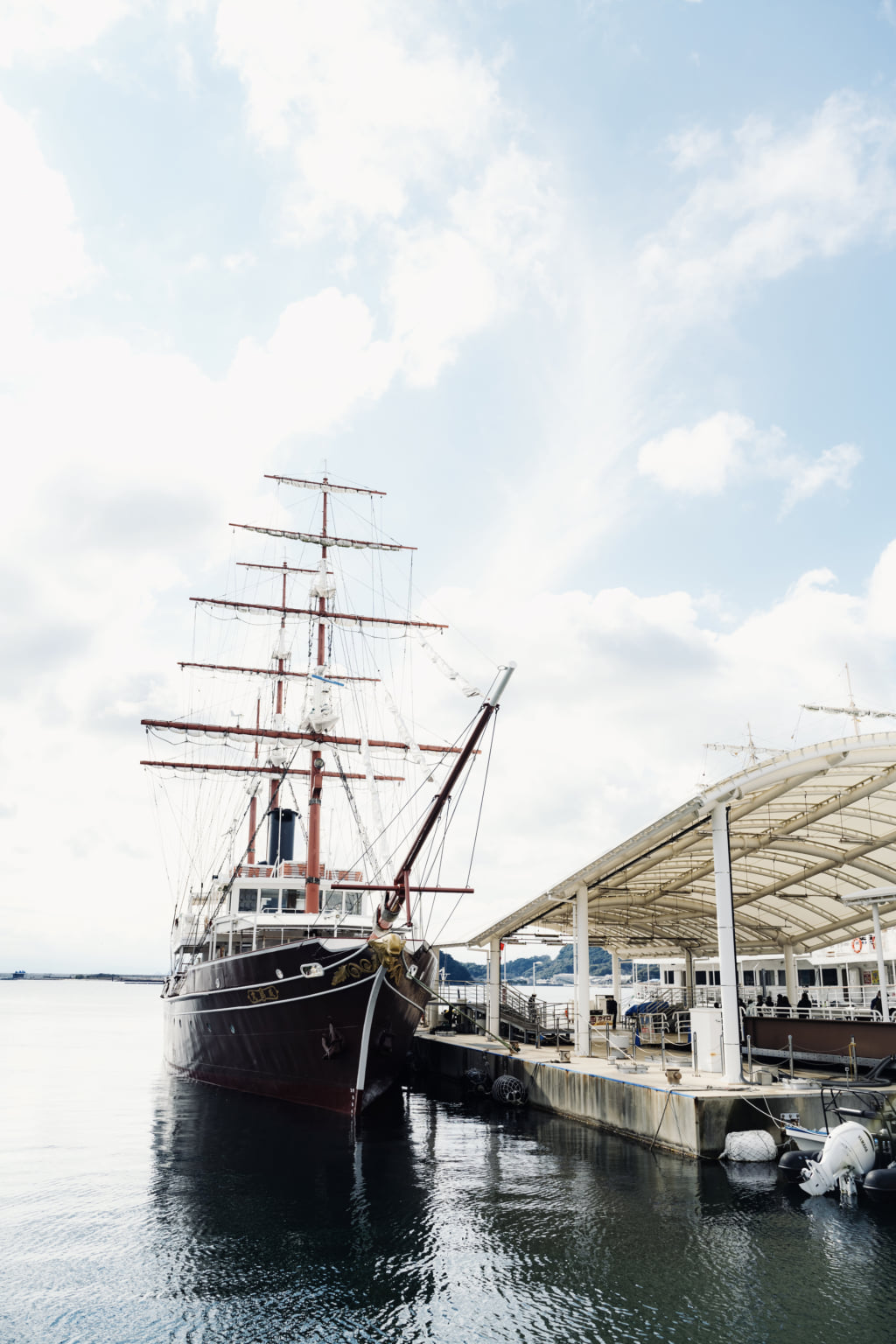
A large sightseeing ship in the shape of a sailboat. The interior is fully equipped with air conditioning and heating, and the ride is comfortable with minimal rocking.
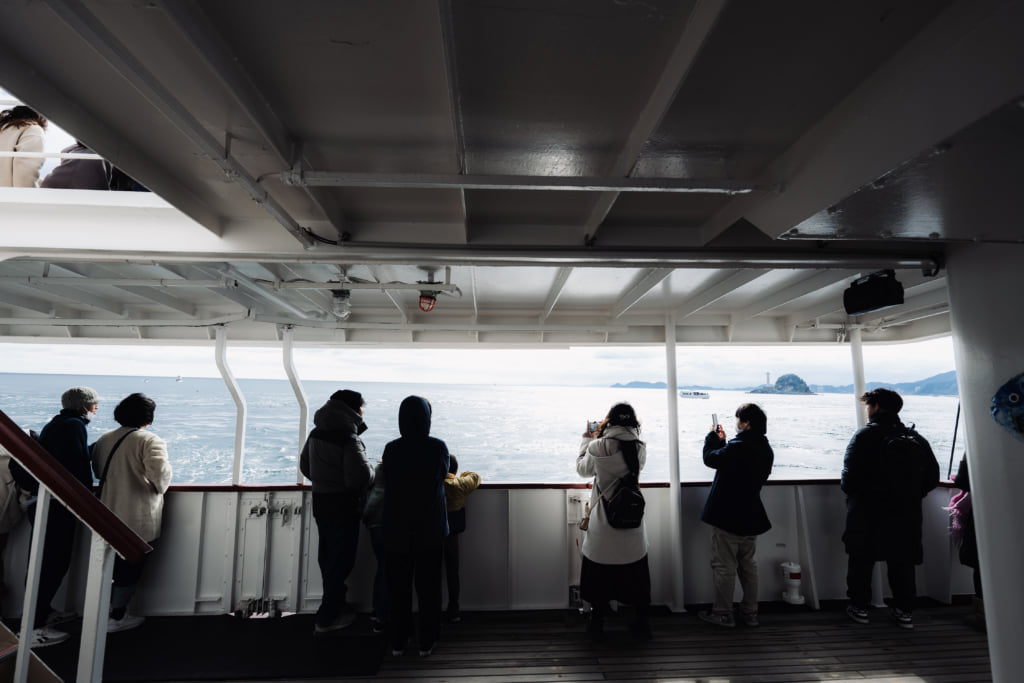
A cruise trip from Fukura Port to the Naruto Strait, where the Naruto whirlpools occur, takes about 60 minutes round trip.
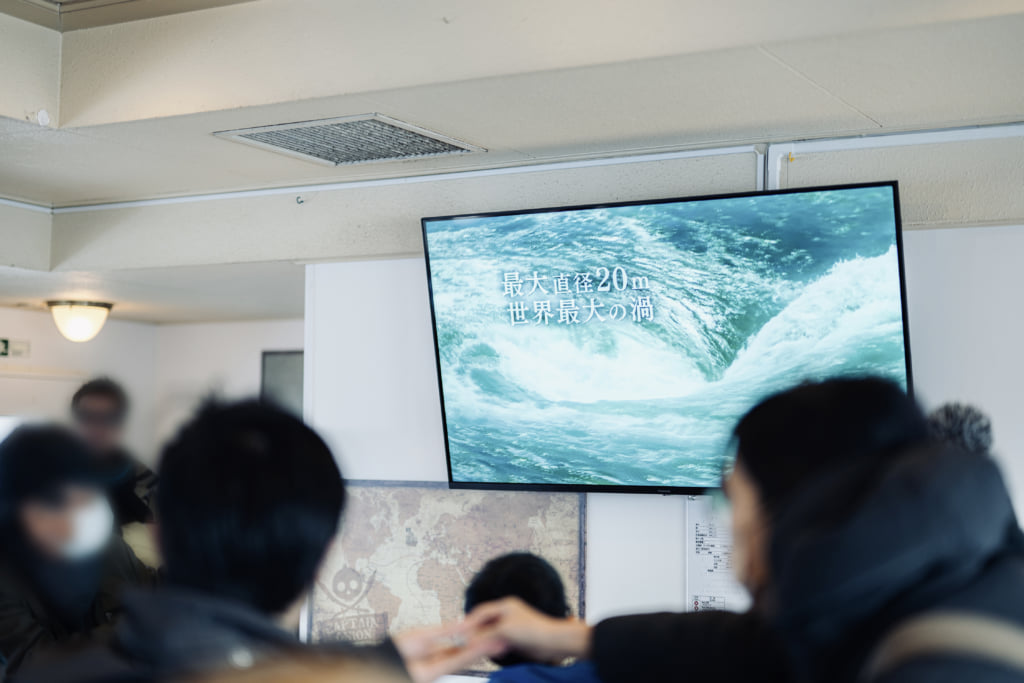
Onboard, you can learn about the history of the Kanrin Maru and the mechanism behind the formation of the Naruto whirlpools.
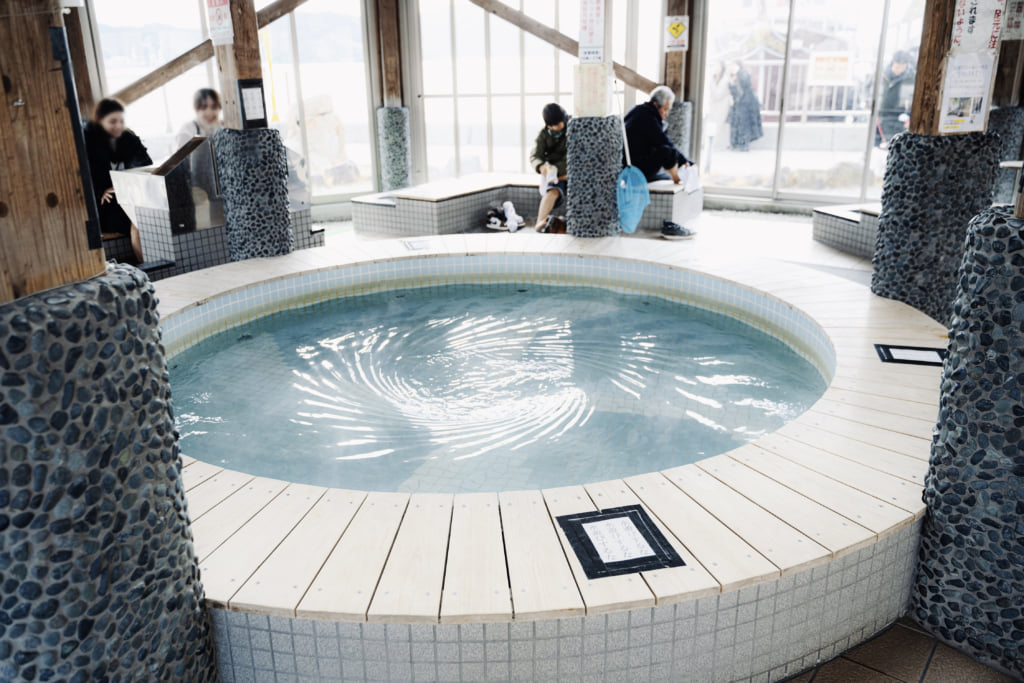
In Fukura Port, there is also a hot spring facility called Ashiyu Uzu no Yu, which is inspired by the Naruto whirlpools.
Address: Fukura Port, Minami-Awaji City, Hyogo Prefecture
Phone: 0799-52-0054
Understanding The Science Behind The Whirlpools And Tasting Local Dishes
The Uzu no Oka Great Naruto Bridge Memorial Hall is a comprehensive tourist facility that opened in 1985, the same year as the opening of the Great Naruto Bridge. Situated atop a hill overlooking the bridge, it features the superb scenic restaurant Uzu no Oka and offers excellent views from the rooftop observatory. Over the years, it has undergone updates to stay relevant to the times, attracting many young visitors seeking Instagrammable objects and neon art.
Particularly popular attractions include the O-tama Onion sculpture for commemorative photos and the Onion Catcher crane game, reminiscent of arcade games, which often sees long queues on weekends.
Moreover, the facility boasts a wide range of gourmet dishes made with local Awaji Island ingredients, including the Awajishima Onion Beef Burger, Awajishima Hilltop Milk Bread, Awaji Beef-wrapped Hamburger Steak, and Awajishima Onion Ramen, some of which sell out due to their overwhelming popularity.
One highlight worth mentioning is the Uzushio Science Museum, featuring the Uzunetarium, a rare hydraulic model that allows visitors to learn about the mechanism of the Naruto whirlpools through visual and three-dimensional representations. Currently, efforts are underway to register the Naruto whirlpools in Hyogo and Tokushima Prefectures as a UNESCO World Heritage Site, and such initiatives contribute to spreading awareness about them. Many await the day when this dream becomes a reality.
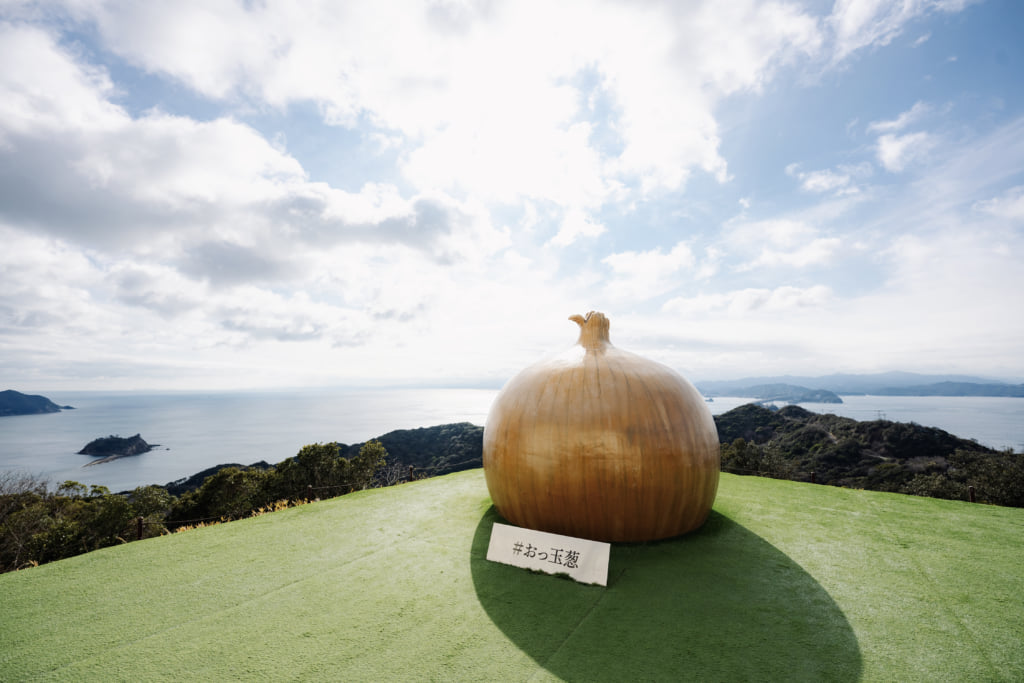
The giant O-tama Onion sculpture, standing at 2.8 meters tall and weighing approximately 250 kilograms, offers a memorable photo opportunity. Visitors can even rent onion wigs for their commemorative photos.
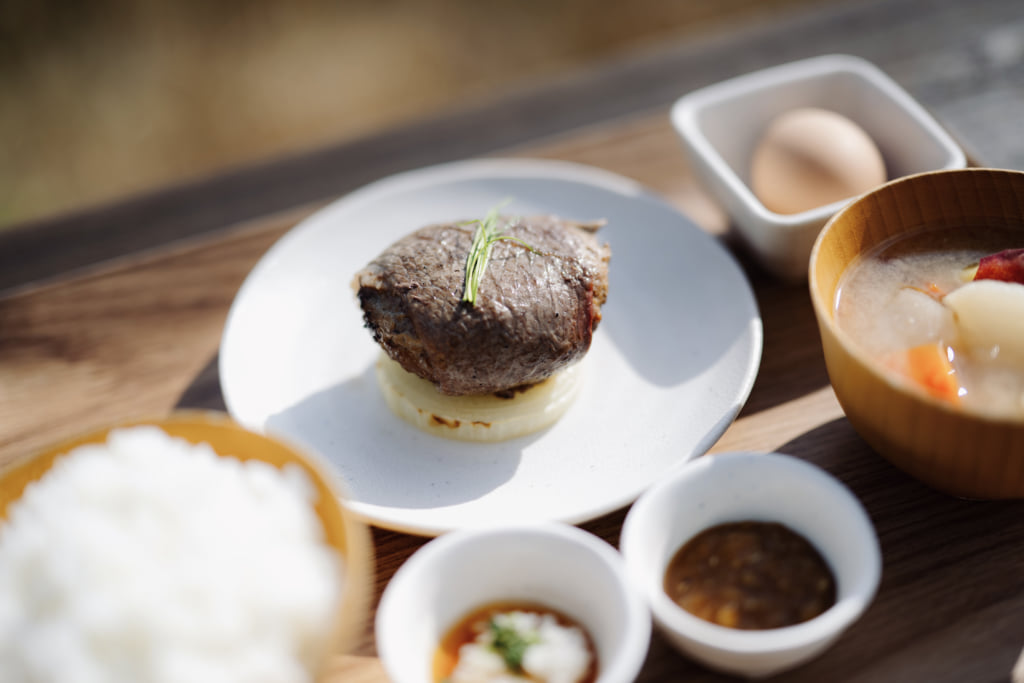
Today’s special at the Uzu no Kuni Kinenkan is the Awaji Beef-wrapped Hamburger Steak Set, which comes with Awaji rice and onions.
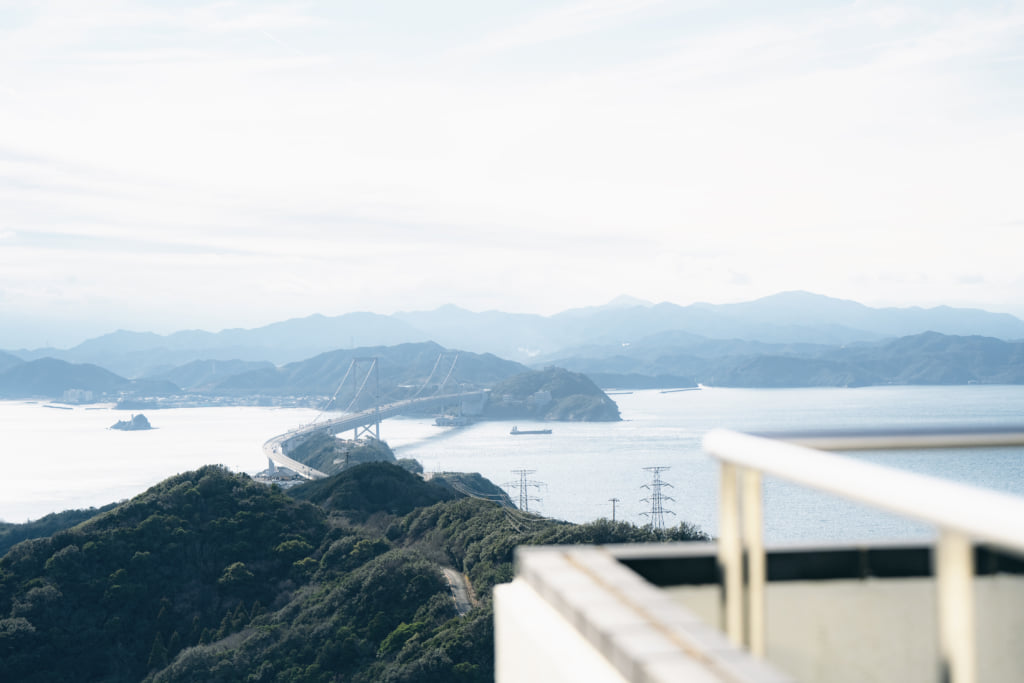
Enjoy the breathtaking view of the Great Naruto Bridge from the rooftop observatory, offering a 360-degree panorama and popular as a spot for viewing the sunset.
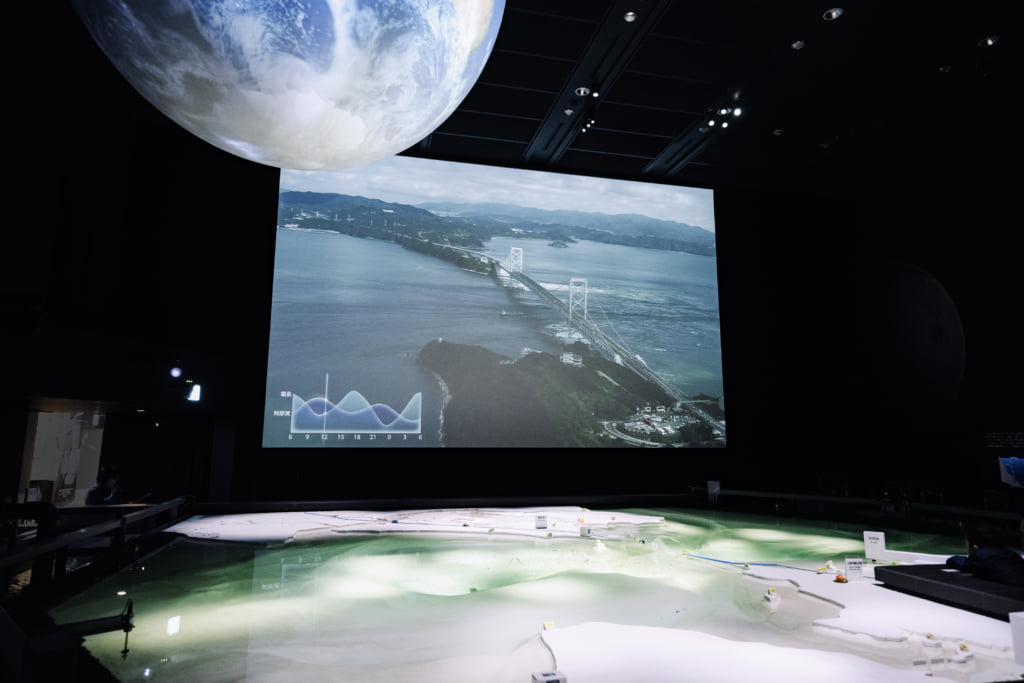
At the Uzushio Science Museum’s Uzunetarium, experience a rare device that reproduces natural whirlpools with hydraulic models, providing insight into their mechanisms.
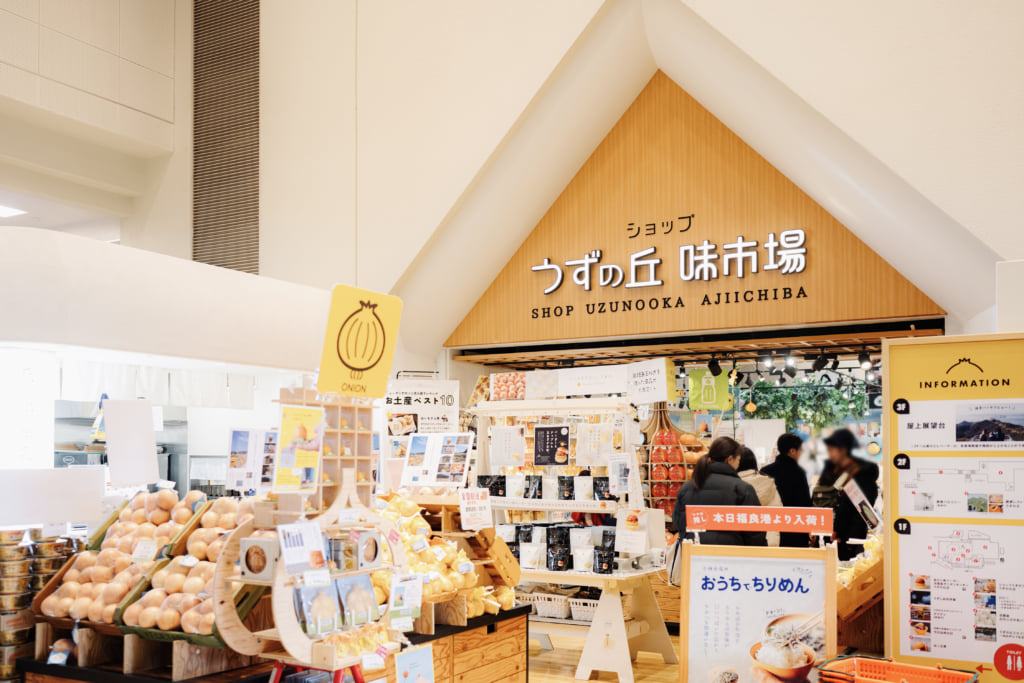
In addition, the facility offers over 300 souvenir items, including Awaji Island onions, processed foods, agricultural products, dairy products, and accessories.
Address: 936-3 Fukura He, Minami-Awaji City, Hyogo Prefecture
Phone: 0799-52-2888
The Awaji Ningyo Joruri Puppet Theater
Since ancient times, Joruri has been a form of entertainment combining music and puppet theater that has been greatly appreciated by the public. The Awaji Ningyo Joruri Puppet Theater originates from the Sanjo district of Minami-Awaji and boasts over 500 years of history. From the Edo period (1603-1868) to the first half of the Showa era (1926-1989), there were about 40 puppet theaters on the island, varying in size. Today, the Awaji Ningyo Joruri Puppet Theater performs using props inherited from one of them, the Yoshida Fujiro Theater.
What makes this theater appealing is the dynamic movements of the puppets. The puppets in the Awaji puppet theater are so large that they require three puppeteers to synchronize their movements to manipulate them. When they move, it seems as if they are truly alive. The Gidayu, a powerful form of recitation accompanying the puppets with the melodious sound of the shamisen, also resonates intoxicatingly within the theater.
In the 2016 Michelin Green Guide—Hyogo, the Awaji Ningyo Joruri Puppet Theater was awarded two stars. This traditional Japanese culture attracts many foreign travelers who, at the theater, can borrow a free audio guide in English, Chinese, or Korean. On the other hand, a space has been set up in the theater for taking photos with the puppets, and before performances, members of the troupe provide an introduction. The theater has found countless ingenious ways to make this art accessible to a wider audience, including videos of the puppets dancing, which can be seen on its social media channels.
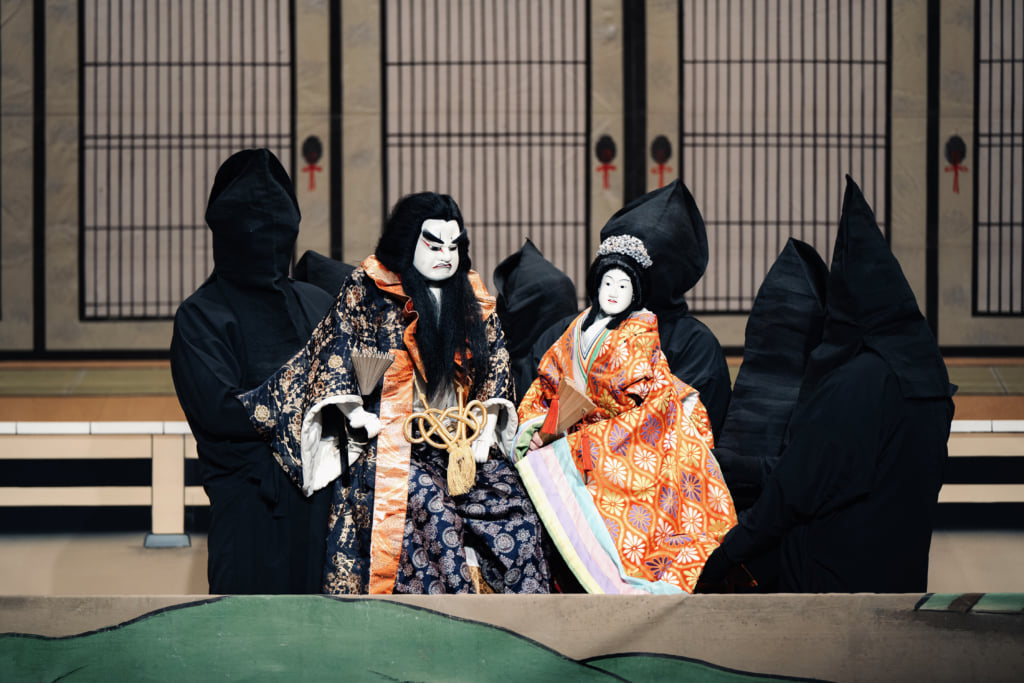
In Act ‘Shinzen-en’ of the play Tamamo-no-Mae Asahi no Tamoto dating back to the Heian period (794-1185), the court astrologer practicing onmyoji, Abe no Yasunari, uses a sacred mirror to chase away Prince Usugumo and an evil fox plotting a coup.
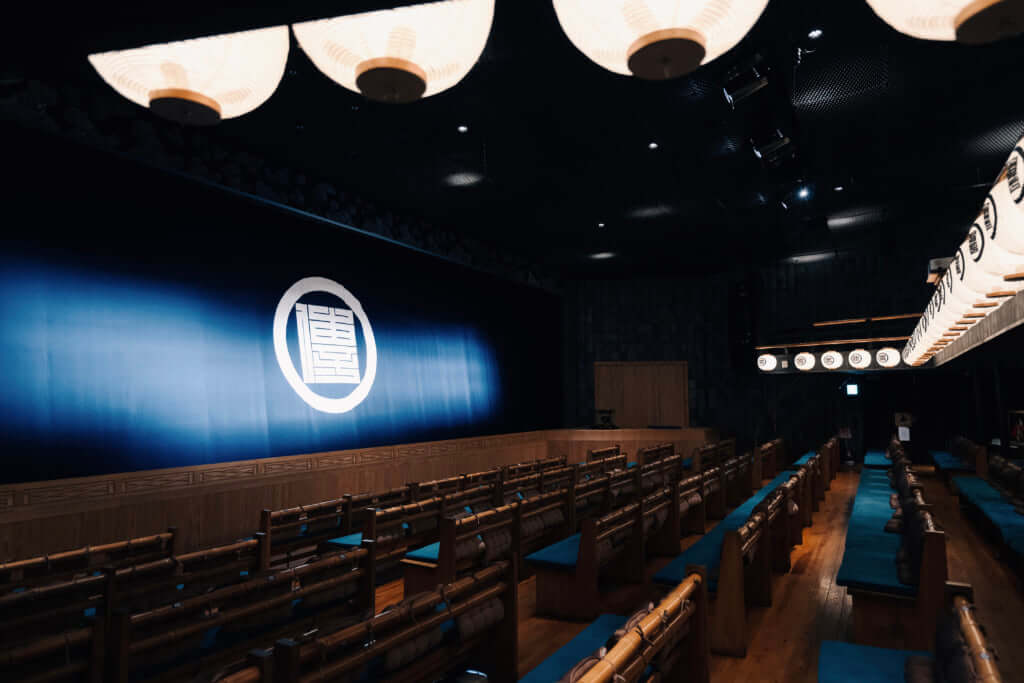
The theater has 179 seats. On the stage curtain, the character ‘fu’ from Yoshida Fujiro serves as the emblem of the Yoshida Fujiro Theater since the Edo period.
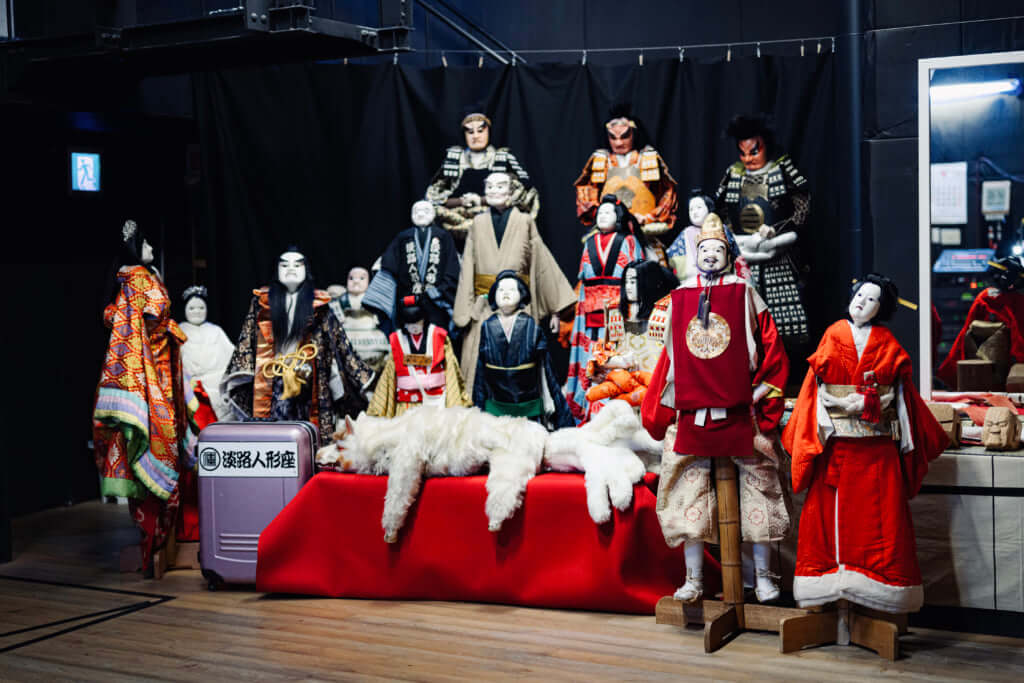
Backstage tours are also a popular experience. It is possible to stand on stage and even wear the traditional Japanese sandals, geta, of the puppeteers for a photo opportunity.
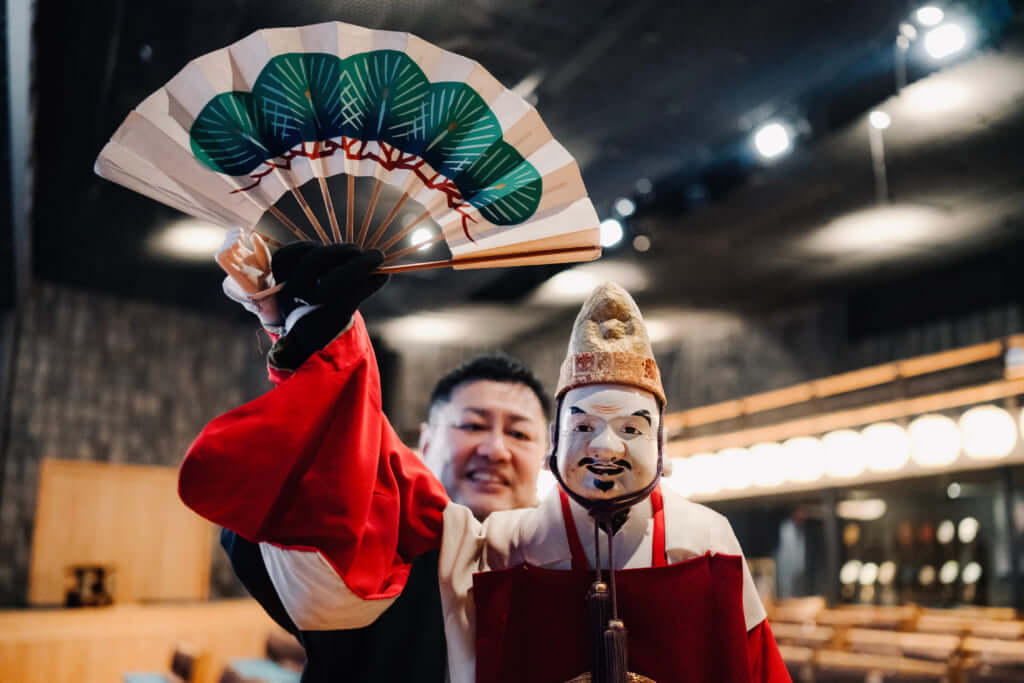
After the performance, Ebisu-sama also poses for photographs. As a souvenir, the popular choice is ‘Ebessan no Ofuwake’ rice biscuits.
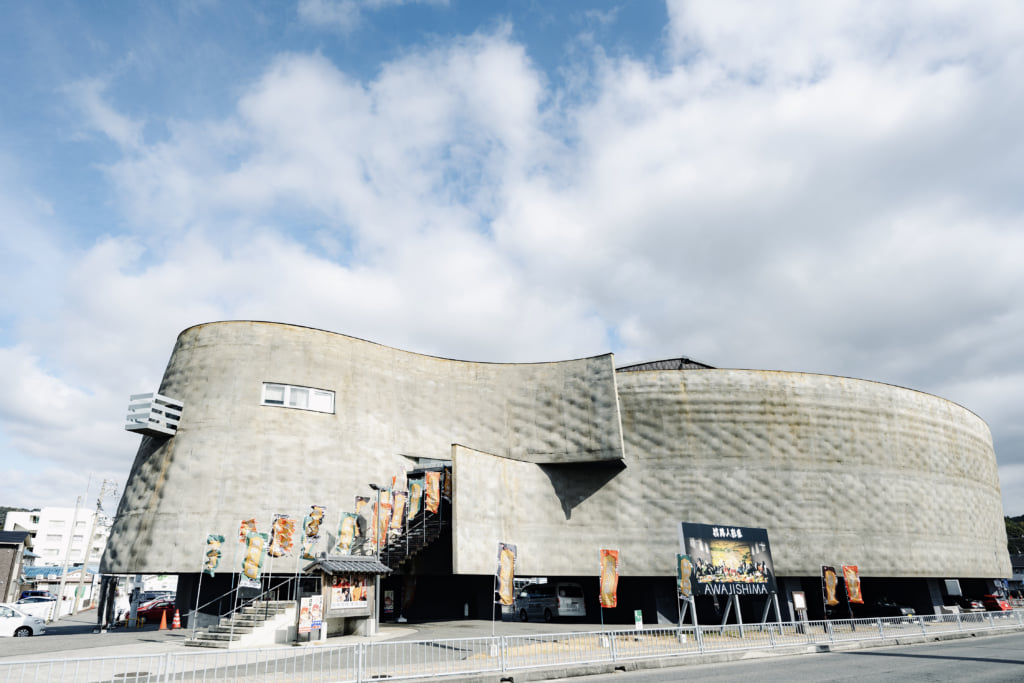
The building housing the theater was designed by architect Shuhei Endo and opened its doors in 2012. From an aerial view, it resembles a part of the puppet’s head called ‘kashira.’
The Awaji Ningyo Joruri Puppet Theater
Address: 1528-1 Fukurako, Minami-Awaji City, Hyogo Prefecture
Phone: 0799-52-0260
Clay Tiles Famous All Over Kansai
In Japanese architecture, roofs are made of tiles. Among the three styles of Japanese tiles, there are Awaji tiles called Awaji-gawara. Awaji Island, once built by raising the bottom of a lake, is rich in clay ideal for making tiles. Once maritime trade developed, it began shipping tiles to various parts of Japan, primarily in the Kansai region.
After the Great Hanshin-Awaji Earthquake (also known as the Kobe earthquake) in 1995, the number of tile production factories drastically decreased, and current production represents only 5% of its golden age. One of the most famous production sites on the island is Tsui, where the ceramic company Daiei operates a factory. On this site, they opened the Tsuchiza Gallery with the idea of ‘reviving these quintessentially Japanese landscapes of tiled roofs.’ Visitors can easily purchase various tile-made objects and participate in workshops to make coaster sets.
In a humid and rainy climate like Japan’s, with large temperature differences, tiled roofs are essential for insulating buildings and making them waterproof. Additionally, being made from the earth, tiles are a more durable material than many others. ‘We would like foreign visitors to know about the existence of tile roofs that contribute to the success of landscapes like those in Kyoto or Nara,’ hopes Mr. Michigami, the company’s representative.
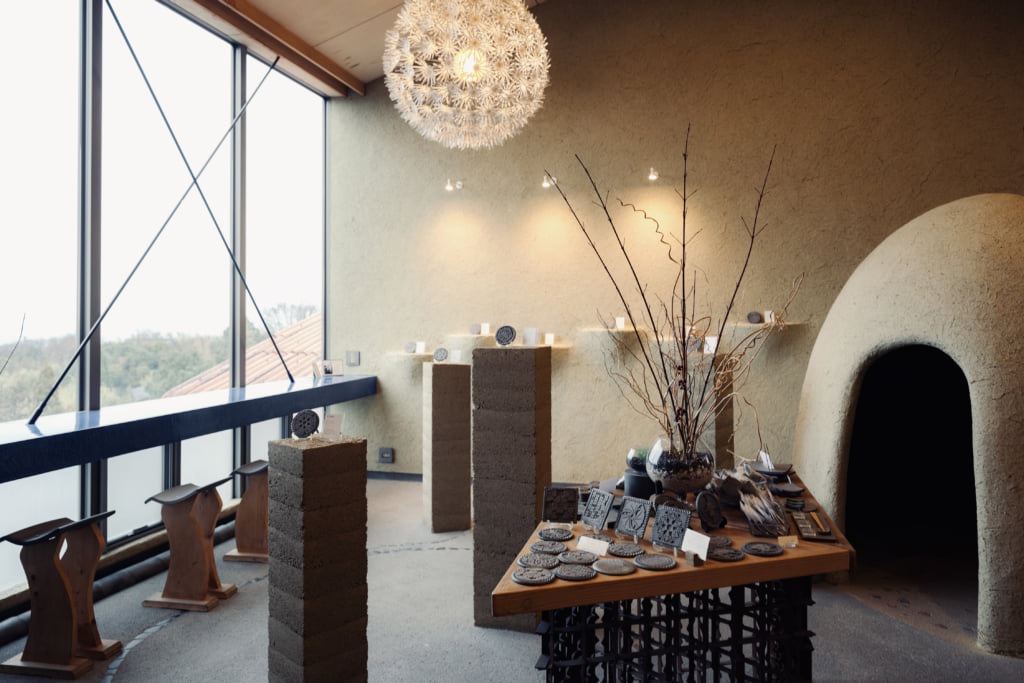
In the gallery, dynamic earth walls and egg-shaped domes evoke the atmosphere of Awaji clay.
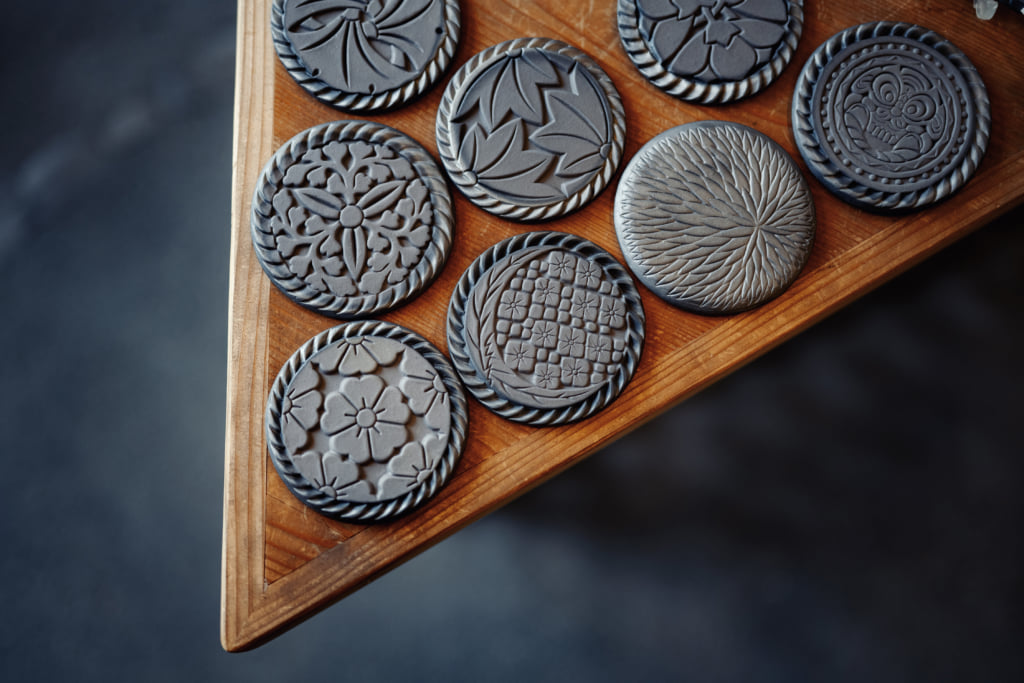
Tile coasters are even used in high-end restaurants. Beyond their beauty, they possess a very useful quality that allows water droplets from drinks to be immediately absorbed.
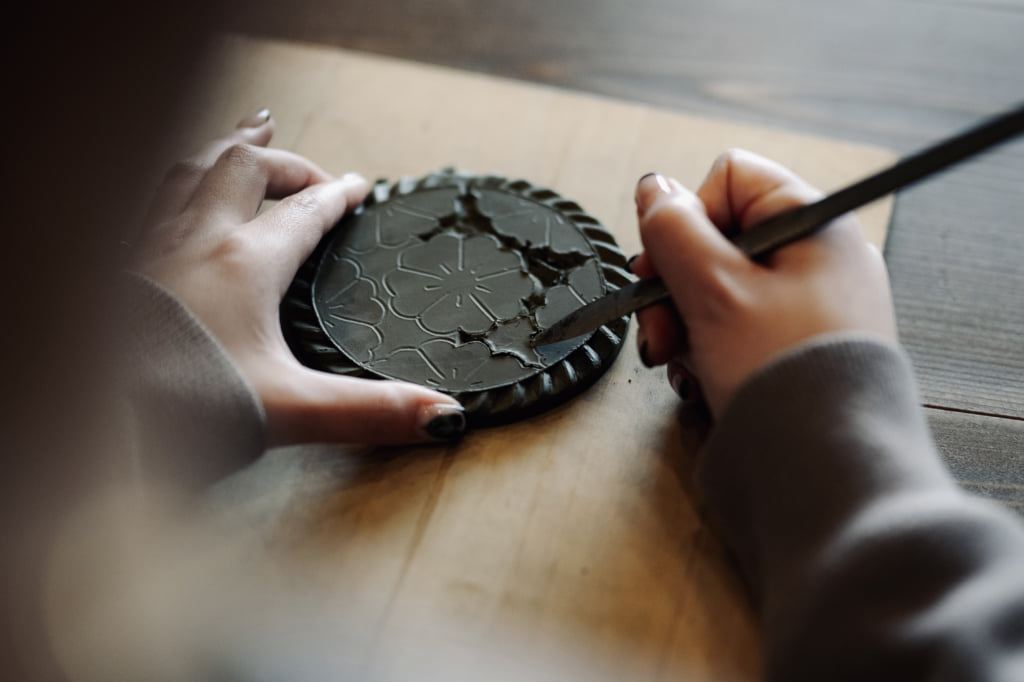
The tile coaster-making workshop lasts about two hours and costs 3,300 yen (tax included). The result can be collected after about two weeks or shipped (shipping fees separate).
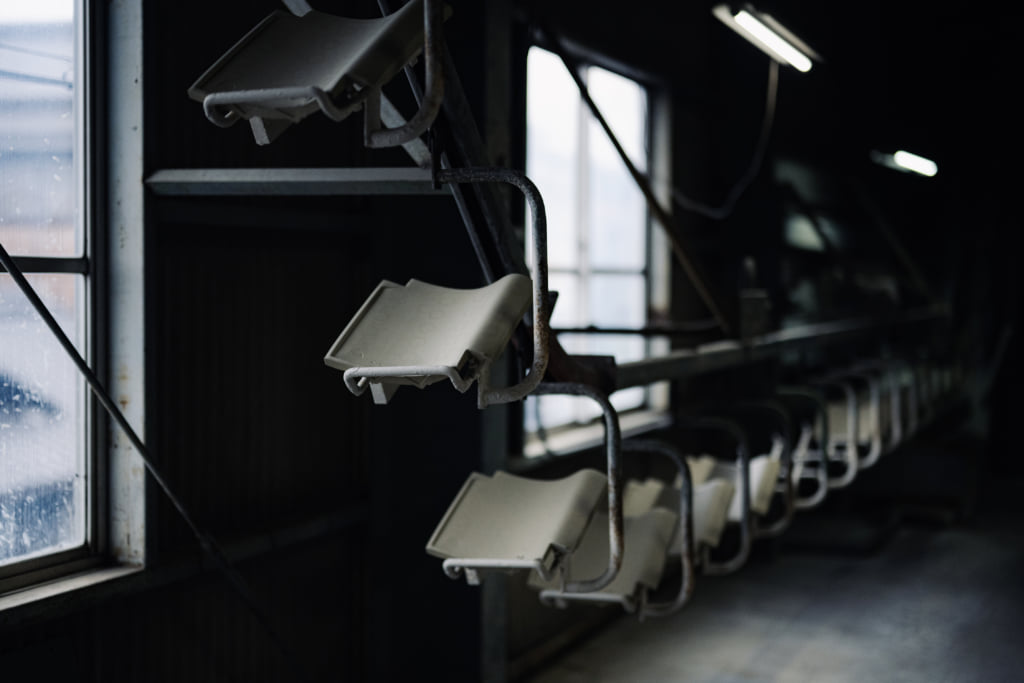
These tiles are also called Ibushi-gawara or smoked tiles. They are characterized by a shiny appearance similar to burnished silver, obtained through a carbonization process during firing.
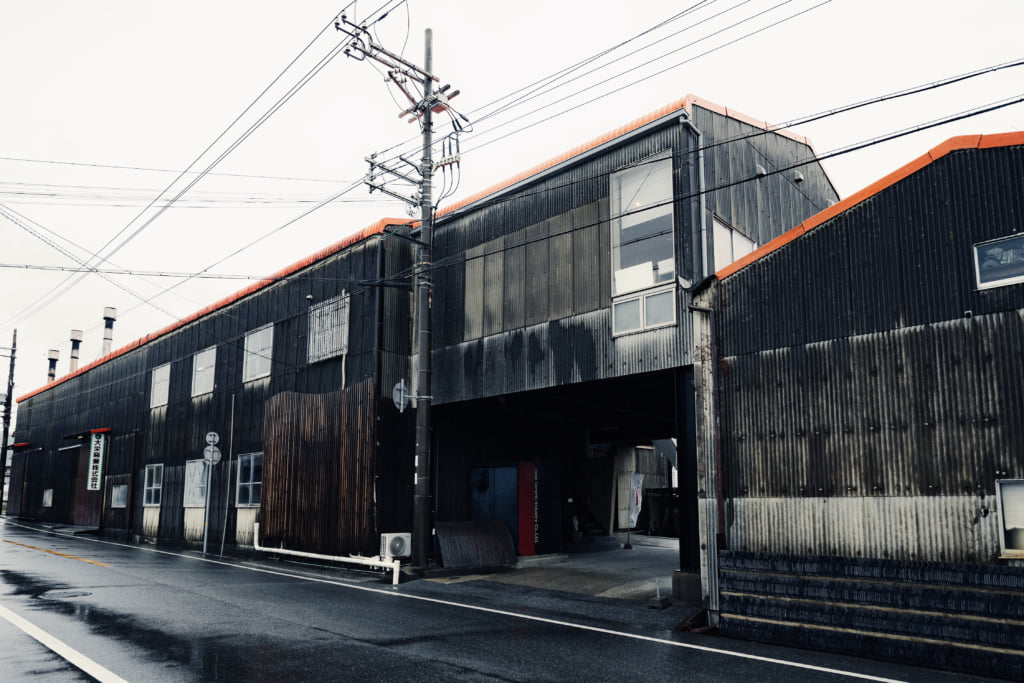
Outside the factory-gallery. Some stages of tile production can also be observed from the gallery.
Address: Tsui, Minami-Awaji, Hyogo Prefecture
Phone: 0799-38-0500
090-8650-0415
Craft Beers Featuring Local Ingredients
Located in a renovated former tile warehouse, Nami no Oto Brewing is the first craft beer brewery and direct sales outlet in Minami-Awaji. Owner Kono, who studied agriculture at university and worked in sake brewing and beer brewing at a sake brewery, was drawn to the richness of Awaji Island’s food culture and opened Nami no Oto Brewing here.
The craft beers at Nami no Oto Brewing feature local ingredients such as oranges, rice, figs, grapes, and ginger from Awaji Island, all carefully sourced from local farmers and producers. Additionally, the brewery aims to be environmentally sustainable by utilizing malt residue produced during the manufacturing process as fertilizer and animal feed.
‘SESSION!!’ and ‘SIDEWAYS,’ among others, have names that resemble movie titles. The labels, designed by a friend of the brewery, are stylish and make for unique souvenirs from Awaji Island. Mr. Kono expressed his desire to someday create beer using onions as an ingredient. The collaboration between Awaji Island’s cuisine and beer is just beginning.
*According to the Liquor Tax Law, it is classified as happoshu (low-malt beer).
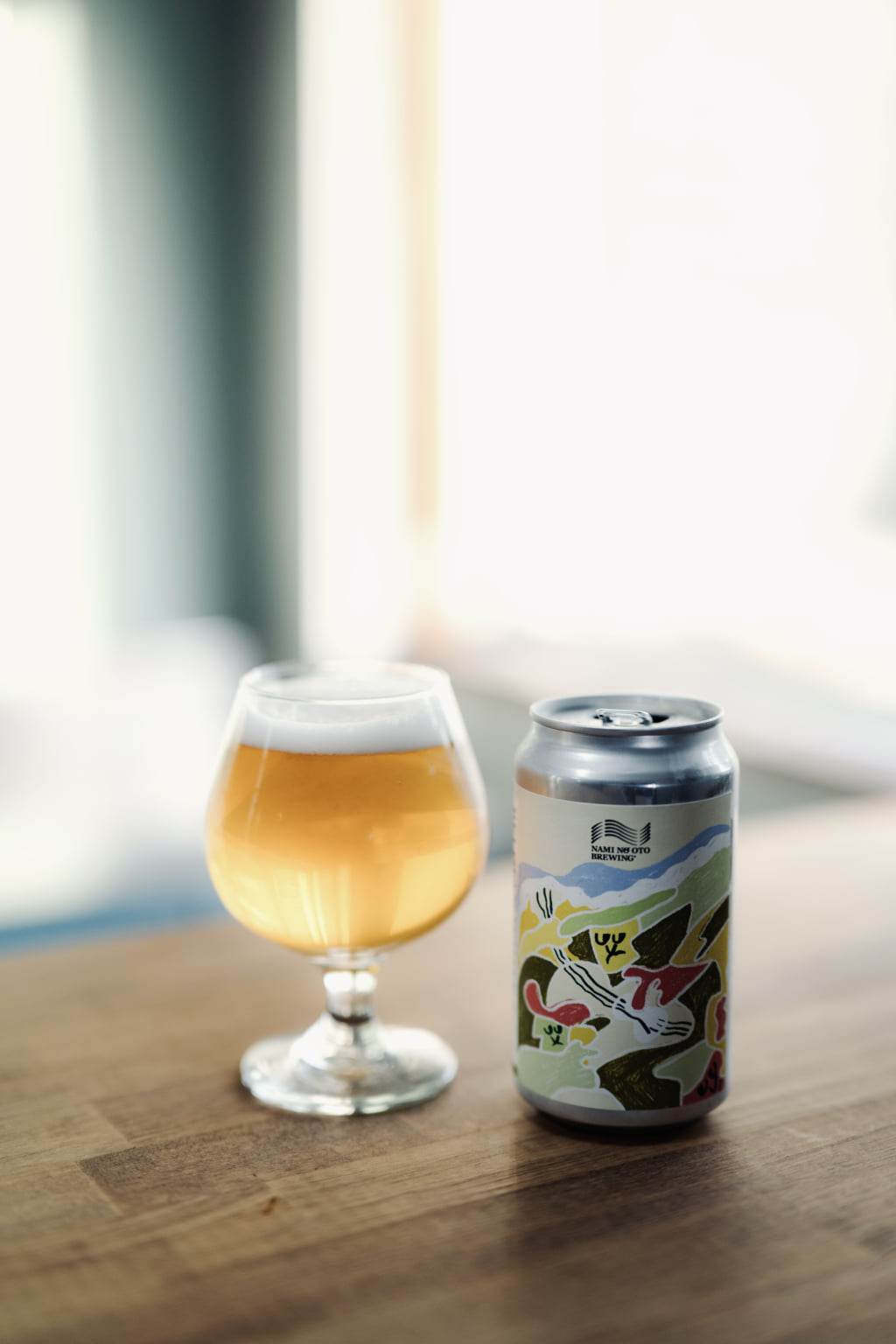
‘The Persian White’ is the only beer continuously brewed since the establishment.
*The photo shown is for photography purposes only, and please note that it is not available for consumption at the direct sales outlet.
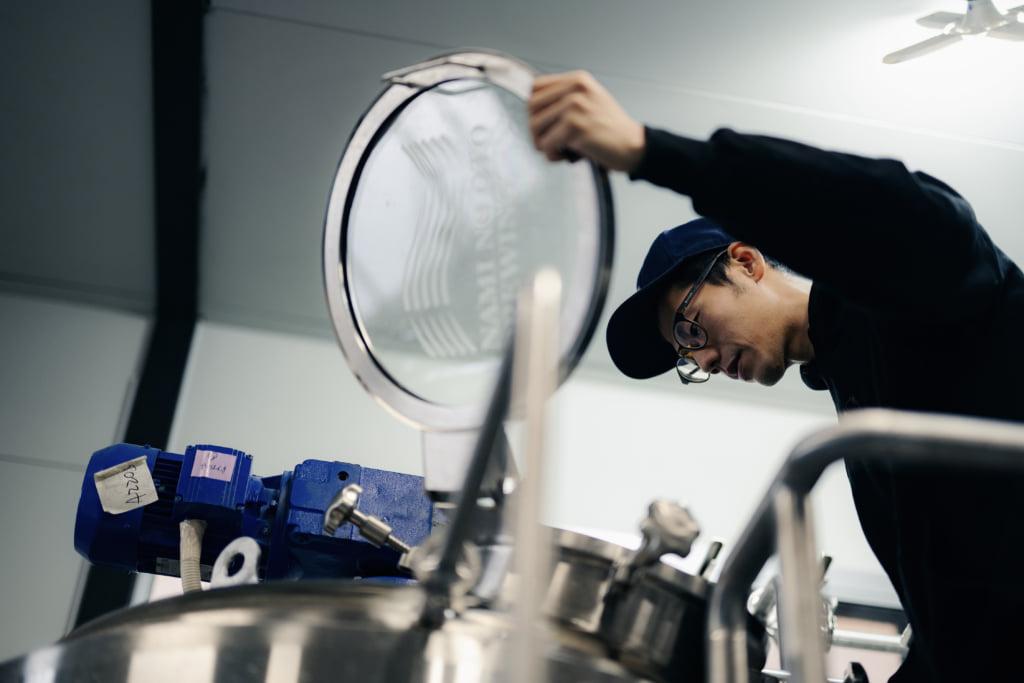
Due to limited production, the brewery produces around 1,000 to 1,500 liters per month, resulting in most beers being available for a limited time only.
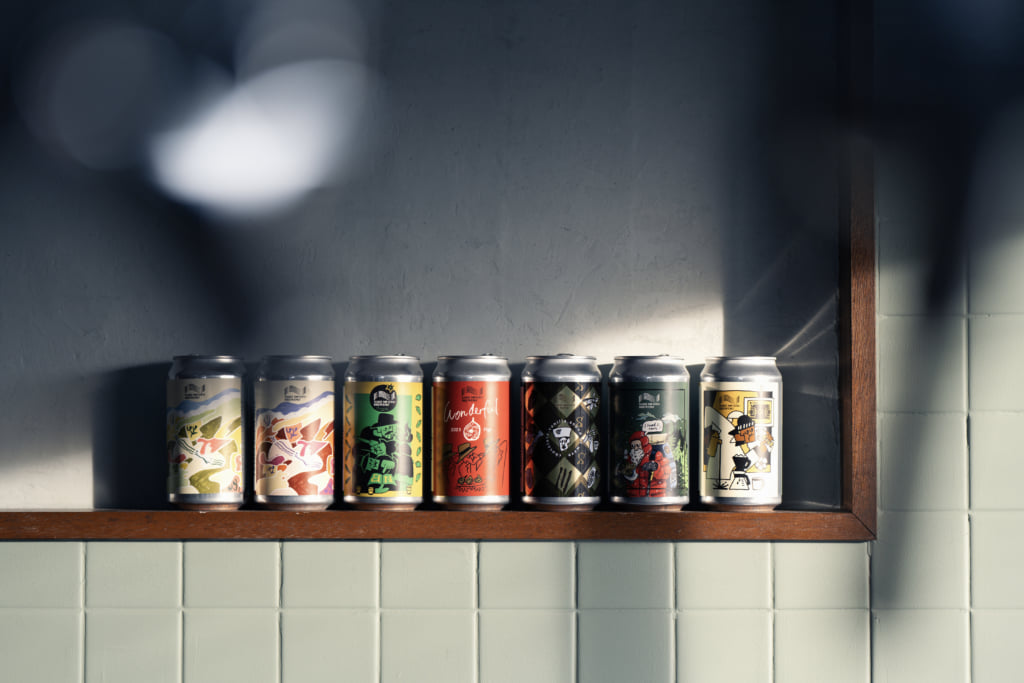
Craft beers vary in price depending on the flavor. Prices range from ¥682 to ¥792 per can, all including tax.
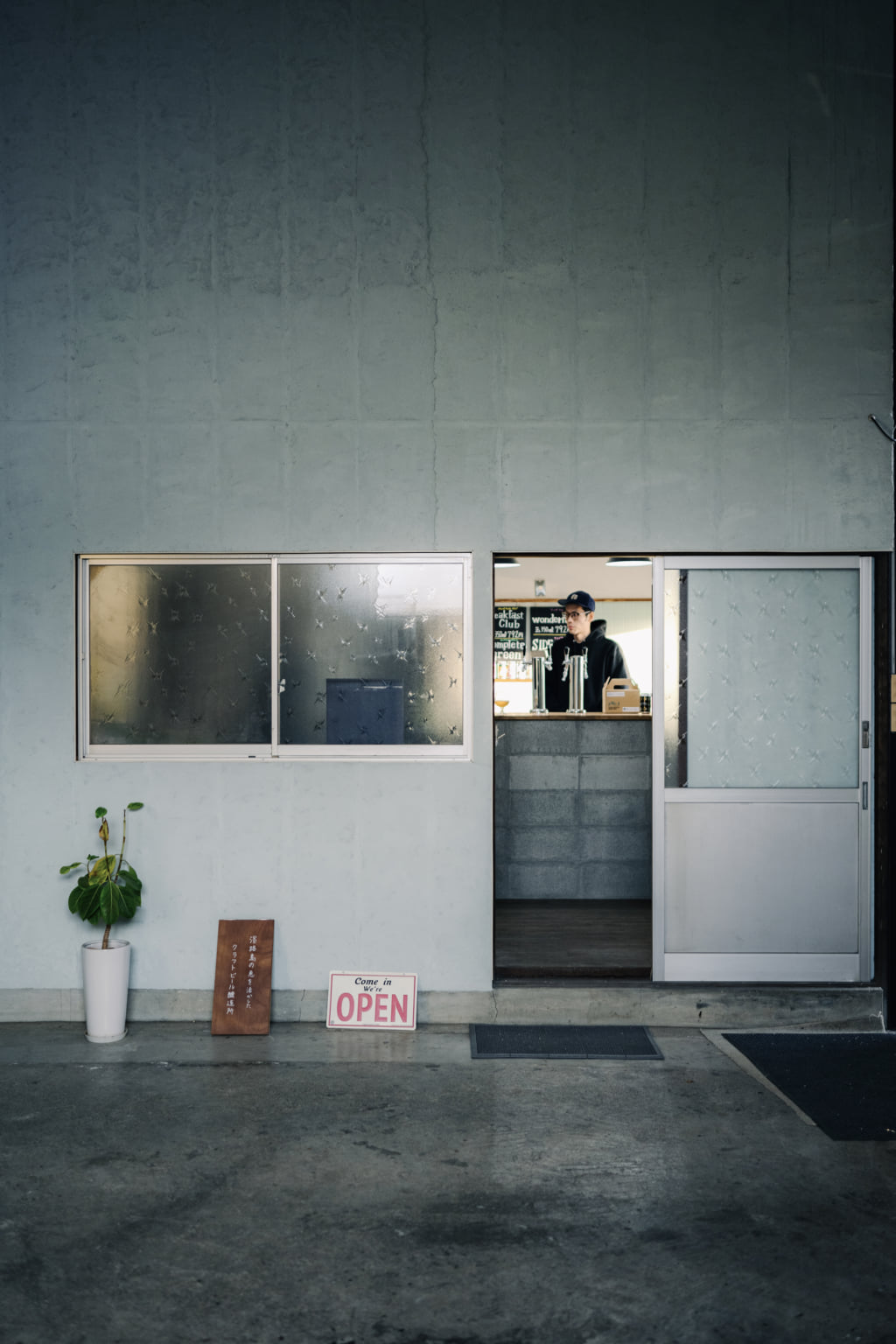
The workshop also houses a direct sales outlet. If you bring your own containers, they will also offer bulk sales by weight using taps.
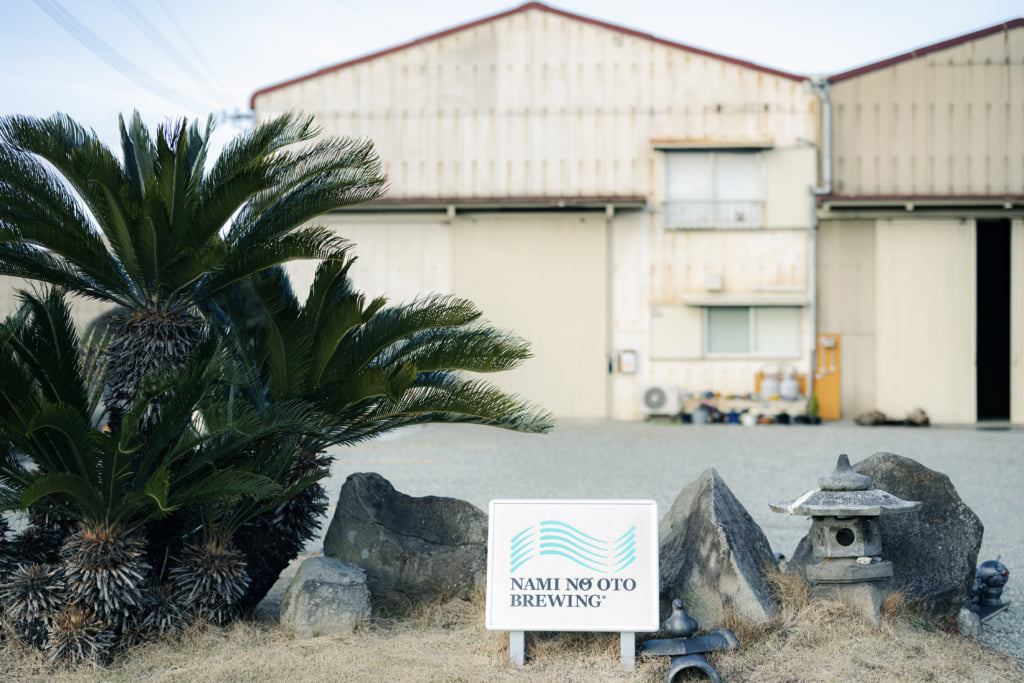
Business hours are limited to Fridays from 11:00 to 15:00 and Saturdays from 11:00 to 17:00 only. It’s advisable to check their social media channels to confirm operating days.
Address: 714-1 Matsuhatsutori, Minami-Awaji, Hyogo Prefecture 656-0311, Japan
Phone: 0799-20-6217
TRENDING
-
Ishiuchi Miyako, A Singular Perspective on Women
Recipient of the 2024 Women in Motion Award, the photographer creates intimate portraits of women through the objects they left behind.

-
Recipe for Ichiraku Ramen from ‘Naruto’ by Danielle Baghernejad
Taken from the popular manga with the character of the same name who loves ramen, this dish is named after the hero's favourite restaurant.

-
Namio Harukawa, Master of Japanese SM Art
'Garden of Domina' offers a dive into the world of an icon of ‘oshiri’, whose work has now reached a global audience.

-
The Tattoos that Marked the Criminals of the Edo Period
Traditional tattoos were strong signifiers; murderers had head tattoos, while theft might result in an arm tattoo.

-
The Emperor of Japanese Porn is Now the Star of a Netflix Series
Deliciously funny, The Naked Director especially succeeds in reviving the atmosphere that was so characteristic of 1980s Japan.





